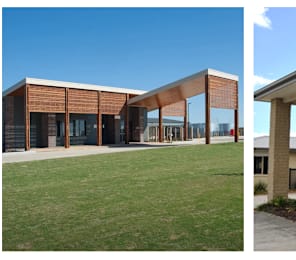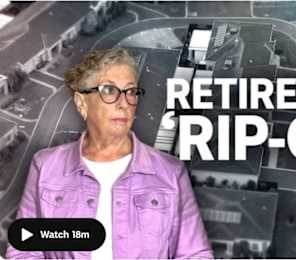Complacency is the biggest risk for the industry at the moment, according to the CEO – and Australian Unity will not be relaxing its guard.
It is easy to understand why Kevin takes this position. As the head of the mutual fund’s Independent and Assisted Living, he is responsible for 50,000-plus older people and 6,000 staff across its extensive home care and disability business, seven aged care homes, 20 retirement villages and Aboriginal home care business.
He is also the Acting Chair of the Workforce Industry Council, set up in mid-May to lead the implementation of the 14 actions contained in the Aged Care Workforce Strategy developed by John Pollaers and his team released in 2018.
Providers cannot risk being complacent
While restrictions are easing around the country, Kevin says he has been telling his team to prepare for the long-haul.
“While everyone is getting their dancing shoes, we will be the last frontier,” he stated.
“This will rumble on in aged care for months – if not years. For us, the biggest risk is complacency as an industry.”
Residential occupancy and home care down
Like many operators, they have taken a hit from the pandemic with the occupancy in their aged care homes falling – from around 98 to 99% in most of their homes to between 95 and 96%. One home has seen a fall to 87% which Kevin blames on shared rooms and their desirability.
However, Kevin believes the real challenge will come in the months ahead when the true extent of the fatalities from COVID-19 in aged care homes overseas becomes apparent.
“People will be asking ‘would I put my family member in there?’,” he said. He forecasts families will want to do more research before choosing where to place their loved ones.
They have also seen around 20% of their home care clients cancel services.
Staff surveyed on school closures
Australian Unity has responded by ramping up its own workforce strategy – beginning with its own staff.
At the start of the pandemic, they surveyed their staff on a range of issues, including whether they would be affected by school closures – in just 24 hours, 600 of their 1,100 aged care staff responded.
“Only 14% said they would be negatively impacted by school closures so we made a lot of decisions based on that information.”
In addition, 70% said they would increase their rosters, while 82% cancelled their leave for the next six months.
“That was good information to work with.”
Paid leave for casual staff
The company also implemented two staffing initiates that Kevin believes have had a significant impact on how they have handled the virus – the first, from ACTU Secretary Sally McManus, was to provide their casual staff with paid leave so they would not come to work if they felt sick.
The second, from Aged Care Quality and Safety Commissioner, Janet Anderson, was to “10x” their communications.
Their marketing team was absorbed into the communications team and told that their challenge was to maintain their existing customers and families.
“It really forced us to do a whole lot of things on how we communicate with families, and I have said to our marketing team, ‘I expect you to change your marketing approach and materials and so on’, because you should know exactly what matters to families and potential customers now because that’s what you’ve been working on for the past nine weeks.”
12-month workforce strategy implemented in eight weeks
The company also brought forward its planned workforce strategy for the next 12 months – which is based on the 14 actions outlined in the Workforce Taskforce report – and executed it in just eight weeks.
This included a social change campaign based around testimonials of people’s experience working in aged care.
Australian Unity also targeted workers laid off from other companies and sectors, such as those from Crown and Qantas, recruiting across a range of roles including care workers, nurses, lifestyle, food services and maintenance.
This netted 1,400 applications, of which nearly 200 have so far been processed into talent pools to begin the recruitment process and onboarding.
The range of the applicants however supports Kevin’s argument that there needs to be a social change to change the perception of care work in the community.
“We’re getting less care workers than we targeted and way more nurses and I think one of reasons is – as said in ‘A Matter of care’ – is that people don’t understand what a care worker is because it is not really professionalised.”
Two coronavirus scares – but visitors still allowed
Australian Unity had two coronavirus scares at its homes early in the pandemic, both from visiting GPs who later tested positive.
Despite these scares, they continued to keep their seven homes open to visitors throughout the pandemic – hosting almost 260 family members on Mother’s Day. During April, they had 1,000 visitors come through the doors along with 600 contractors.
Kevin says instead the challenge they found was families “self-selecting” to not visit loved ones.
“The saddest indictment is the 40% of people who never get anyone anyway,” he said.
“When Minsters stand up and belt providers about visitors, I always think about those 40% and wonder why they don’t make that figure more public.”
Dental staff redeployed to aged care
Visitors have been managed by staff redeployed from Australian Unity’s dental centres which have been closed during the pandemic.
The company made the decision not to stand down any frontline staff so 40 dental nurses were offered the opportunity to work in their aged care homes – 21 took up the offer and have been assisting with entry and exit procedures and access to telehealth appointments for residents.
Some have now expressed an interest in completing their Certificate III and making the move permanent.
Social campaign needed to change perception of aged care workers
Kevin says more needs to be done however to attract people to the sector. He has been lobbying hard for greater recognition of the work of aged care staff during the pandemic.
“We really need a social change campaign to let people know what a great industry it is,” he stressed.
“The sector is trying to attract people but are being downtrodden constantly by the Prime Minister and the media.”
“It’s become circular, they wonder why there is no one in the industry while they keep beating it up.”
Providers – not Government – to drive change
However, the CEO says the drive for change needs to come more from providers than the Government.
“The sector needs to lift its game by providing career paths, clear accreditation so people know what they achieve, and simplifying the industrial instruments.”
“Across the board, it needs a salary lift.”
Kevin says funding – or lack of it – should not be a deterrent either.
“There’s ways to do things that can be innovative and think positive. The little things do add up to greater things,” he said, using the example of capturing staff stories and publishing them.
70% of their staff have been carers who have progressed up.
“There are career paths, the industry is just not good at showcasing it.”
Multiple funding sources helps to manage risk
The CEO does hold concerns for the long-term sustainability of the sector as a whole.
He acknowledges that Australian Unity is fortunate because it operates with a mix of public and private revenue thanks to its retirement villages and partnerships with other providers.
“As an organisation, we manage our risk very diligently and are not responsible for a portfolio solely wedded to one form of funding.”
“A lot of mainline aged care residential organisations accept that they would be in trouble.”
Consolidation not the answer
However, Kevin does not believe consolidation is the answer to the sector’s future viability – though he concedes some consolidation is likely to happen in the near term.
“I don’t buy into the consolidation argument that just because you are big, you provide better care,” he said.
“Some big providers are not doing a great job and some smaller ones an amazing one.”
Where he sees consolidation happening is around the Aged Care Quality Standards – introduced last July – and operators no longer being able to justify keeping them up at their scale.
“You have got to have pretty sophisticated rostering capabilities to meet consumer demand and to balance the industrial relations instrument so it’s not that easy.”
However, he says the provision of care – and the culture – is what is key – “it’s the most important thing,” he adds.
Workforce Council to appoint CEO next week
Looking ahead, Kevin says the sector must now work with the Royal Commission into Aged Care to land on a way forward that providers can work on with the Government to actually implement and nail.
To this end, the Workforce Council has been holding interviews for a CEO – an appointment Kevin hopes they will announce next week.
The tender is also out for the Centre of Growth and Translational Research laid out in the Pollaers report, while LASA is leading the development of a voluntary code for aged care workers which is expected to be released in September.
“The Code is important because it will be a strong signal to the Department and the Government that sector is stepping up.”
The Prime Minister should take note – rather than treading on the idea.










